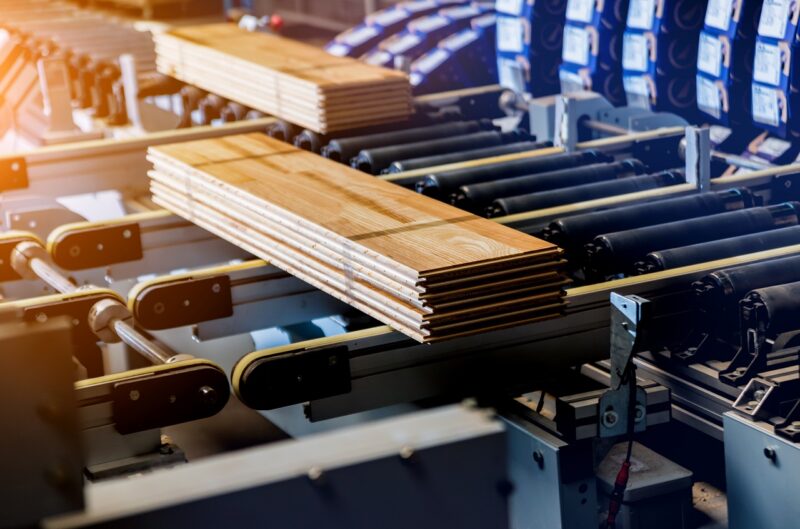Published: 05/05/25 By: Mike Bekin
Timber’s mechanical properties refer to how it responds to external forces. In the engineering world, that refers to load, stress and bending, for example. To say it is pretty important that the material you choose for a construction project has the mechanical properties to match the application is an understatement! So what are the mechanical properties of timber? Let’s take a look.
Strength Parallel to Grain
If you are looking for the strongest, stiffest properties for your timber products, it is best to look in the direction which runs parallel to the grain, so the fibres support the weight.
In this orientation, your boards will display their highest tensile strength (the maximum amount of stretching or pulling stress they can withstand before breaking) and compressive strength (the maximum amount of squeezing or crushing stress they can withstand before deforming or failing.) A higher tensile and compressive strength will create a timber which is more durable, resistant to bending or breaking under pressure, and better suited for structural applications.
You can also measure the modulus of elasticity, which is a measure of stiffness, indicating how much it can or will deform under a given load while returning to its original shape once the load is removed. For example, if you add a weight to a timber board and the timber bends, will it become flat again when the weight is removed?
- Tensile Strength: Softwoods, at 12% moisture content, generally have tensile strengths ranging from 70 to 140 MPa. Hardwoods, because of their denser cellular structure, tend to have a higher tensile strength.
- Compressive Strength: While lower than tensile strength, compressive strength typically falls between 30 to 60 MPa for softwoods, with hardwoods again performing better.
- Modulus of Elasticity: typically between 7 and 14 GPa for both hardwoods and softwoods.
It is also important to note that knots or irregularities in the grain can reduce each of these values and, in some cases, tensile and compressive strength can drop by up to 90%. That is why timber with a lot of knots is not recommended for structural applications.
It is therefore vital you work with a timber supplier who knows how to select and grade the right timber boards for your application, such as our team of experts at EcoChoice.
Strength Perpendicular to the Grain
When you look at timber strength perpendicular to the grain (across the fibers), you will notice that it is a lot weaker than when looking parallel to the grain (along the fibers). Here is a quick overview of the values so that you can compare:
- Tensile Strength: Wood is much weaker when stretched across the grain. Radial and tangential tensile strengths are only 5–8% and 3–5% of the strength along the grain. This means designs should avoid tension in these directions by minimizing joints or notches which would create weak points.
- Compressive Strength: Wood can withstand only 10–20% of its strength along the grain when compressed. In this direction, compression leads to the densification of cell walls, which increases resistance but also causes significant deformation. In other words, your timber will start to crush and compact rather than break, leading to noticeable shrinking and deformation before it ultimately fails.
- Modulus of Elasticity: The stiffness of wood perpendicular to the grain is much lower, at just 4–9% of the parallel-to-grain values.
You can learn more about the mechanical properties of different timbers in our timber species guide. Download technical specification sheets to learn more about your timber choices.
Ekki, for example, has a compressive strength of 96 MPa and a modulus of elasticity of 21,420 MPa. Oak has a compressive strength of 58 MPa and a modulus of elasticity of 13,300 MPa.
Flexure and Shear
Larger boards of timber are more likely to have defects than shorter boards, making them typically the weaker option of the two.
Timber also has shear strength, which refers to sliding or tearing, such as when parts of the board move parallel to each other in opposite directions.
- Shear Parallel to Grain: This type of shear happens along the grain and can cause a brittle break. Its strength ranges from 5 to 12 MPa.
- Shear Perpendicular to Grain: This is rarely a concern because timber is usually designed to avoid heavy loads in this direction.
- Rolling Shear: This occurs in certain loading conditions but is not common for most applications.
Find Strong, Durable Timber at EcoChoice
Not all timber species are equal in terms of mechanical properties. If you are looking for timber products which can bend, for example, Glulam is an excellent choice as it is made up of many smaller parts of timber glued together. For a strong, weight-bearing timber, consider Oak or Western Red Cedar.
The simplest option to find the right timber for your project? Get in touch with the EcoChoice team. We will be happy to work out the mechanical properties you need from your timber and match you with the ideal species, taking the leg work out of finding your next construction materials.
Tags: construction, engineering, Timber, timber strength
Categories: Insights
